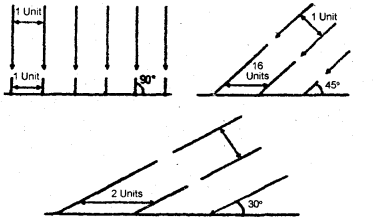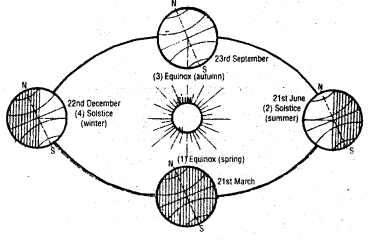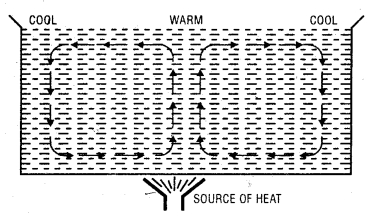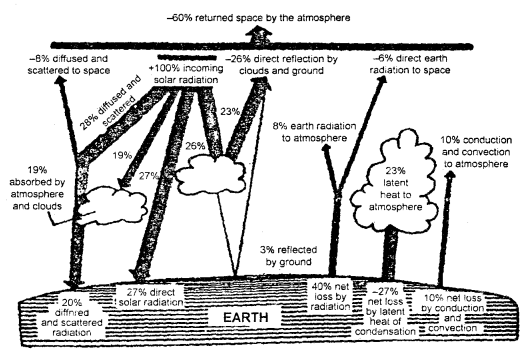NCERT Solutions | Class 11 Geography (Fundamentals of Physical Geography) Chapter 9 | Solar Radiation, Heat Balance and Temperature

CBSE Solutions | Geography Class 11
Check the below NCERT Solutions for Class 11 Geography (Fundamentals of Physical Geography) Chapter 9 Solar Radiation, Heat Balance and Temperature Pdf free download. NCERT Solutions Class 11 Geography were prepared based on the latest exam pattern. We have Provided Solar Radiation, Heat Balance and Temperature Class 11 Geography NCERT Solutions to help students understand the concept very well.
NCERT | Class 11 Geography (Fundamentals of Physical Geography)
| Book: | National Council of Educational Research and Training (NCERT) |
|---|---|
| Board: | Central Board of Secondary Education (CBSE) |
| Class: | 11 |
| Subject: | Geography |
| Chapter: | 9 |
| Chapters Name: | Solar Radiation, Heat Balance and Temperature |
| Medium: | English |
Solar Radiation, Heat Balance and Temperature | Class 11 Geography | NCERT Books Solutions
Important Questions for Class 11 Geography Chapter 9 Solar Radiation, Heat Balance and Temperature
Solar Radiation, Heat Balance and Temperature Important Extra Questions Very Short Answer Type
Question 1.
Answer:
The incoming solar radiation is called insolation.Question 2.
Answer:
Only A of the billionth fraction of the energy radiated from the sun is intercepted by the earth.Question 3.
Answer:
Isotherms are imaginary lines joining places having equal temperatures.Question 4.
Answer:
The energy radiated from the sun comes from nuclear reactions in its core.Question 5.
Answer:
The temperature at the core of sun-is about 15,000,000°C.Question 6.
Answer:
The radiant energy of the sun is commonly known as short waves or electromagnetic waves.Question 7.
Answer:
The short waves travel at a speed of light, i.e., about 2,98,000 km. per second.Question 8.
Answer:
The longwave radiation, i.e., re-emittance of the energy received from the earth’s surface, is terrestrial radiation.Question 9.
Answer:
They are the processes of absorption, reflection and scattering.Question 10.
Answer:
The gains and losses in heat by incoming and outgoing radiation is known as heat budget.Question 11.
Answer:
Transfer of heat through the horizontal movement of the air is called advection.Question 12.
Answer:
The rate of change of temperature is called the temperature gradient.Question 13.
Answer:
January and July months represent the seasonal extreme of temperature.Question 14.
Answer:
Planck’s law states that hotter a body, the more energy it will ‘ radiate and shorter is the wavelength of that radiation.Question 15.
Answer:
Specific heat is the energy needed to raise the temperature of one grain of a substance by one degree Celsius.Question 16.
Answer:
The incoming solar radiation is termed as insolation. It comes in the form of short waves.Question 17.
Answer:
The atmosphere gets heated in the following ways:(a) Radiation,
(b) Conduction,
(c) Convection,
(d) Advection.
Question 18.
Answer:
Due to differential heating and cooling of land and seawater.Question 19.
Answer:
1/2000 million part of the total energy radiated by the sun is intercepted by the earth.Question 20.
Answer:
Terrestrial radiation.Question 21.
Answer:
Warmth or coolness of the air is called its temperature.Question 22.
Answer:
23’/2°N to 23’/2°S.Question 23.
Answer:
66V20 to poles.Question 24.
Answer:
Maritime (moderate).Question 25.
Answer:
Due to the increase in carbon dioxide.Question 26.
Answer:
The incoming solar radiation is termed as insolation.Solar Radiation, Heat Balance and Temperature Important Extra Questions Short Answer Type
Question 1.
Answer:
The cold air acts almost like water and moves down the slope to pile up deeply in pockets and valley bottoms with warm air above. This is called air drainage. It protects plants from frost damages.Question 2.
Answer:
Main characteristics of isotherms are:- Isotherms run along the latitudes.
- Isotherms take sudden bends at the land-water edge because of land-water contact.
- They are drawn at equal space which indicates the latitudinal thermal gradient.
- Isotherms change their positions.
Question 3.
Answer:
The incoming solar radiation is called insolation. Insolation is * greatest at the equator. It decreases polewards. The total amount of insolation received at the equator is roughly about 4 times of that received at the poles. In tropical regions, the amount of insolation is only large but there is also little seasonal variation. It is because all their places between Tropic of Cancer and Capricorn experience overhead sun twice during the course of a year. Insolation is maximum twice in a belt between 23°30’ and 66°30′.Question 4.
Answer:
The energy from the sun passes through different layers of the atmosphere before it reaches the ground. Atmospheric gases are essentially transparent to visible light, but suspended particles of liquid or solid material can absorb or reflect light. A thick cloud may allow less than 10% of sunlight to reach the earth’s surface. Clouds generally behave like mirrors. They reflect sunlight off in different directions rather than absorbing. Reflected sunlight is permanently lost from the earth. The blue colour of the daytime sky is due to the scattering of sunlight.Question 5.
Answer:
The temperature is the measurement of available or sensible heat energy in a system. It is a measure of hotness or coldness of the body. Such property determines whether the heat will flow out or into an object when it comes in contact with other objects.Question 6.
Answer:
The earth revolves around the sun once in a year in an elliptical path called the ‘plane of ecliptic’. At the same time, the earth rotates on its axis in 24 hours. The earth’s axis is tilted making an angle of 66°30′ from the plane. Due to inclination of the earth’s axis, the angle of the sun’s rays falling on the earth’s surface varies from vertical on the equator to more and more slanting as one moves towards the poles.Question 7.
Answer:
Ocean currents are large movements of ocean water from places of warm temperature to colder temperature or vice-versa. Their movement affects the temperature of the adjacent areas. The warm currents raise the temperature of adjoining colder landmasses. The climate of north-western Europe is modified to a large extent by ocean currents of the North Atlantic Ocean. The cold currents of the western coast of South Africa or South America lower the temperature of adjacent warmer lands.Question 8.
Answer:
Prevailing winds also affect the temperature conditions of the areas. The moderating effects of oceans are brought to the adjacent lands through winds. On the contrary, off-shore winds take the effects of warm or cold currents away from the land.Question 9.
Answer:
The sun emits short wave radiation to space and the earth’s surface. The solar energy strikes the upper limits of the atmosphere and it gradually reaches the earth’s surface directly or indirectly (scattered) and is absorbed. It is estimated that out of 100 units of incoming solar energy, 22 units travel directly to the earth’s surface. This energy flow is called direct radiation. Some of the scattered rays eventually also find their way down indirectly to the earth’s surface. They are collectively called diffused radiation.Question 10.
Answer:
The burning of fossil fuels, the cultivation of the soil, industrialisation of land on a large scale, rapid means of transport and deforestation have caused an imbalance in the atmosphere. These activities are increasing the amount of carbon dioxide. Thus, the greenhouse effect has raised the average temperature of the earth by 0,5°C. By the year 2000, the earth’s average temperature will go up by 2°C.This is called global warming. It is causing a rise in the sea level due to melting of glaciers. It is threatening to submerge many coastal areas.
Question 11.
Answer:
Due to the inclination of the earth’s axis, the angle of the sun’s rays falling on the earth’s surface varies from vertical on the equator to more and more slanting as one moves towards the poles. This latitudinal difference in the angle of incidence of sun’s rays leads to different amounts of insolation received at different parallels.
Fig.9.5: Incidence of the sun’s rays on the earth’s surface
Question 12.
Answer:
The amount of insolation reaching the earth’s surface depends largely on the inclination or angle of the sun’s rays. Vertical rays and those nearly 80 in the lower latitudes are more effective in increasing temperature than the oblique rays in the higher latitudes, although the duration of sunshine may be much longer in the latter case. Moreover, the oblique rays spread over a larger area on the earth’s surface whereas the vertical rays are concentrated over a smaller area, the intensity of heat being lighter in the area insolated by vertical rays.Question 13.
Answer:
Transfer of heat through the horizontal movement of the air is called advection, whereas the vertical mixing of the air is termed as convection. Convection is caused by the circulatory movement of the air itself and the pull of gravity.Question 14.
Answer:
Isotherms show the temperature of a place supposing it to be at sea level. The temperature is reduced to sea level to avoid the effect of relief. Thus, isotherms do not show the actual temperature of a place.Solar Radiation, Heat Balance and Temperature Important Extra Questions Long Answer Type
Question 1.
Answer:
The earth rotates on its axis in 24 hours. The earth’s axis is tilted at an angle of 66°30′ from the plane.
Fig.9.6 : Solstices and equinoxes
When the northern hemisphere is tilted towards the sun, it receives the maximum amount of insolation. On 21 st June, the sun is overhead the Tropic of Cancer and it is the longest day of the year for the northern hemisphere. All this time, the southern hemisphere is away from the sun and 21st June is the shortest day of the year for the southern hemisphere. On 21st March and 23rd September, the sun is over the equator and the length of the day is the same everywhere throughout the world. This position is called the equinox.
On 21st December, the southern hemisphere is in front of the sun and receives the maximum daylight. It is, however, the tropics that receive the maximum insolation.
Question 2.
Answer:
Altitude is the height of a point above mean sea level, measured vertically. The temperature decreases with increasing height and latitude from the earth’s surface. This vertical decrease in temperature takes place at the rate of 0.65° per 100 metres or 165 metres per 1°C. These variations are normal throughout the troposphere and are termed as normal lapse rate. The atmosphere near the surface is denser and contains a large amount of water vapour and dust particles. Being closer to the land surface, it absorbs more terrestrial heat than that of the upper air. Hence, the temperature is higher in the lower part of the atmosphere than in the upper part, where the air is cleaner. That is why the higher we go, the cooler it is. Ootacamund, Mount Abu, Panchmarhi are cooler in summer than plains.Question 3.
Answer:
There are three basic mechanisms of heat transfer:- Radiation,
- Conduction, and
- Convection.
1. Radiation: Radiation is the act of transmitting energy in the form of particles of electromagnetic waves. The process is similar to that of transmission of light from an electric bulb. There are two forms of radiations: solar radiation and terrestrial radiation. The atmosphere gets heated up, in fact, through terrestrial radiation and not by solar radiation.
2. Conduction: When two bodies of unequal temperatures are in contact with one another, there is a flow of energy in the form of heat from warmer to cooler body. The layer of air resting upon the warmer earth becomes heated by the process of conduction. The actual conduction during the course of the day affects only the lowest layer of the atmosphere.
3. Convection: Convection is the process of heat transfer caused by the dying circulatory movement of the fluid itself. It takes place due to difference in temperature, and hence in density, and the pull of gravity. Convection produces vertical movement. The horizontal movement of a similar nature is called advection.

Fig97: Convection circulation
A cyclic circulation helps in transforming the heat of lower layers to the upper layers of the atmosphere. This process of heating is convection.
Question 4.
Answer:
The only source of heat for the earth or the atmosphere is the sun. But the sun does not heat the atmosphere directly. The solar radiation or energy emitted from the sun travels through space and reaches the earth’s surface in the form of insolation or incoming solar radiation. The incoming solar radiation has no significant role in heating the atmosphere. But it helps the earth’s surface. The earth, in turn, reradiates this energy in the form of terrestrial radiation.Thus the earth functions as a transformer in an electric circuit, receiving energy in one state and transmitting it to another. The sun heats the earth and earth heats the atmosphere. Nearly 51 % of solar energy reaches the earth directly or indirectly. The sun emits short wave radiations to space. The earth, on the other hand, radiates it back in long waves. The terrestrial radiation warms up the layers of atmosphere above it by direct contact or through the transmission of heat by upward movement of air currents.

Fig.9.8: The annual radiation budget of the earth. Units are percentages of the total solar radiation received at the outer edge of the atmosphere.
Question 5.
Answer:
The sun has three shapes: the core and the interior. The innermost portion of the sun is extremely hot and hence here hydrogen atoms combine to form a smaller number of heavier helium atoms. In this process, certain mass is converted into energy.The Photosphere: Photosphere is the solar surface. The energy produced in the core reaches to this surface. Most of the sun’s energy comes from the photosphere and we see it as a solar disc. In the photosphere, there are granules that transport energy from the base of the photosphere to its surface. Sunspots are dark regions on the photospheres. They are formed due to strong magnetic fields. The energy is released in the form of x-ray and ultra-violet radiations from the sunspots.
Above the photosphere occurs the sun’s atmosphere. The lower part is chromosphere and the upper is the corona. They are visible only during solar eclipses. Corona exudes electromagnetic energy. These energy particles can be captured by earth’s magnetic field in the ionosphere and their interaction with gases produce the aurora.
NCERT Class 11 Geography (Fundamentals of Physical Geography)
Class 11 Geography Chapters | Geography Class 11 Chapter 9
NCERT Class 11 Fundamentals of Physical Geography Solutions
NCERT Solutions for Class 11 Geography: Fundamentals of Physical Geography
-
NCERT Solutions For Class 11 Geography Chapter 1 Geography as a Discipline
NCERT Solutions For Class 11 Geography Chapter 2 The Origin and Evolution of the Earth
NCERT Solutions For Class 11 Geography Chapter 3 Interior of the Earth
NCERT Solutions For Class 11 Geography Chapter 4 Distribution of Oceans and Continents
NCERT Solutions For Class 11 Geography Chapter 5 Minerals and Rocks
NCERT Solutions For Class 11 Geography Chapter 6 Geomorphic Processes
NCERT Solutions For Class 11 Geography Chapter 7 Landforms and their Evolution
NCERT Solutions For Class 11 Geography Chapter 8 Composition and Structure of Atmosphere
NCERT Solutions For Class 11 Geography Chapter 9 Solar Radiation, Heat Balance and Temperature
NCERT Solutions For Class 11 Geography Chapter 10 Atmospheric Circulation and Weather Systems
NCERT Solutions For Class 11 Geography Chapter 11 Water in the Atmosphere
NCERT Solutions For Class 11 Geography Chapter 12 World Climate and Climate Change
NCERT Solutions For Class 11 Geography Chapter 13 Water (Oceans)
NCERT Solutions For Class 11 Geography Chapter 14 Movements of Ocean Water
NCERT Solutions For Class 11 Geography Chapter 15 Life on the Earth
NCERT Solutions For Class 11 Geography Chapter 16 Biodiversity and Conversation
NCERT Class 11 India Physical Environment Solutions
NCERT Solutions for Class 11 Geography: India Physical Environment
-
NCERT Solutions For Class 11 Geography Chapter 1 India: Location
NCERT Solutions For Class 11 Geography Chapter 2 Structure and Physiography
NCERT Solutions For Class 11 Geography Chapter 3 Drainage System
NCERT Solutions For Class 11 Geography Chapter 4 Climate
NCERT Solutions For Class 11 Geography Chapter 5 Natural Vegetation
NCERT Solutions For Class 11 Geography Chapter 6 Soils
NCERT Solutions For Class 11 Geography Chapter 7 Natural Hazards and Disasters
Practical Work in Geography Class 11 Solutions
NCERT Solutions for Class 11 Geography: Practical Work in Geography
-
NCERT Solutions For Class 11 Geography Chapter 1 Introduction to Maps
NCERT Solutions For Class 11 Geography Chapter 2 Map Scale
NCERT Solutions For Class 11 Geography Chapter 3 Latitude, Longitude and Time
NCERT Solutions For Class 11 Geography Chapter 4 Map Projections
NCERT Solutions For Class 11 Geography Chapter 5 Topographical Maps
NCERT Solutions For Class 11 Geography Chapter 6 Introduction to Aerial Photographs
NCERT Solutions For Class 11 Geography Chapter 7 Introduction to Remote Sensing
NCERT Solutions For Class 11 Geography Chapter 8 Weather Instruments, Maps and Charts

Post a Comment
इस पेज / वेबसाइट की त्रुटियों / गलतियों को यहाँ दर्ज कीजिये
(Errors/mistakes on this page/website enter here)